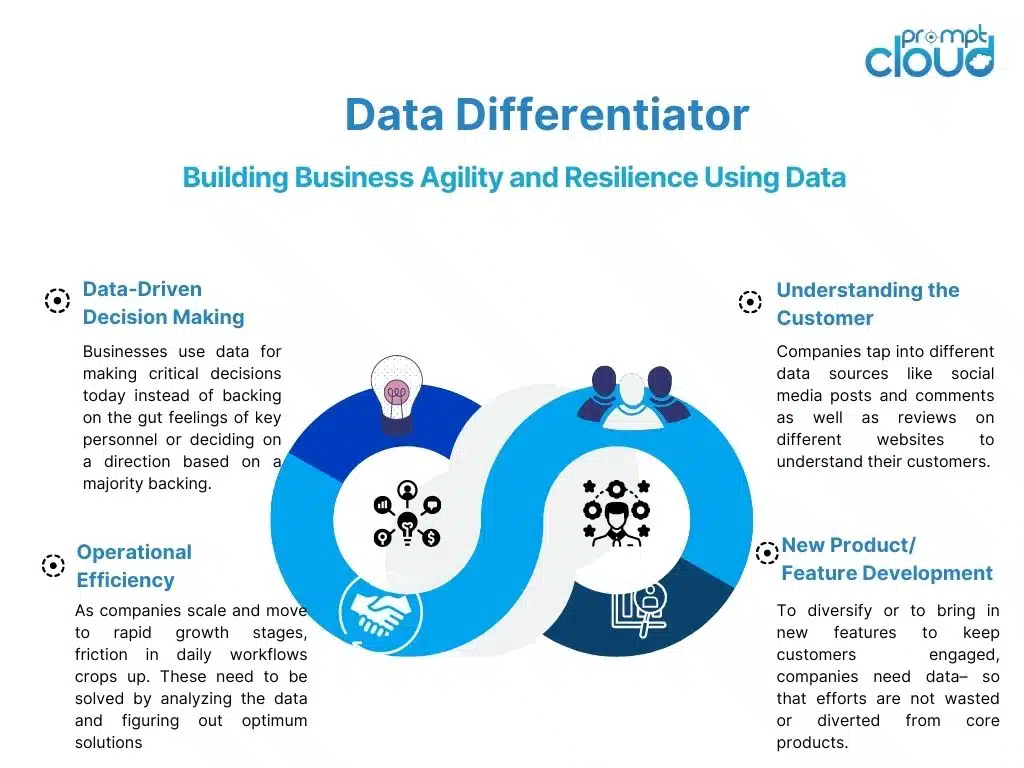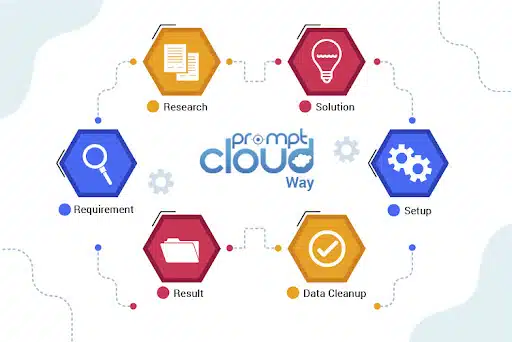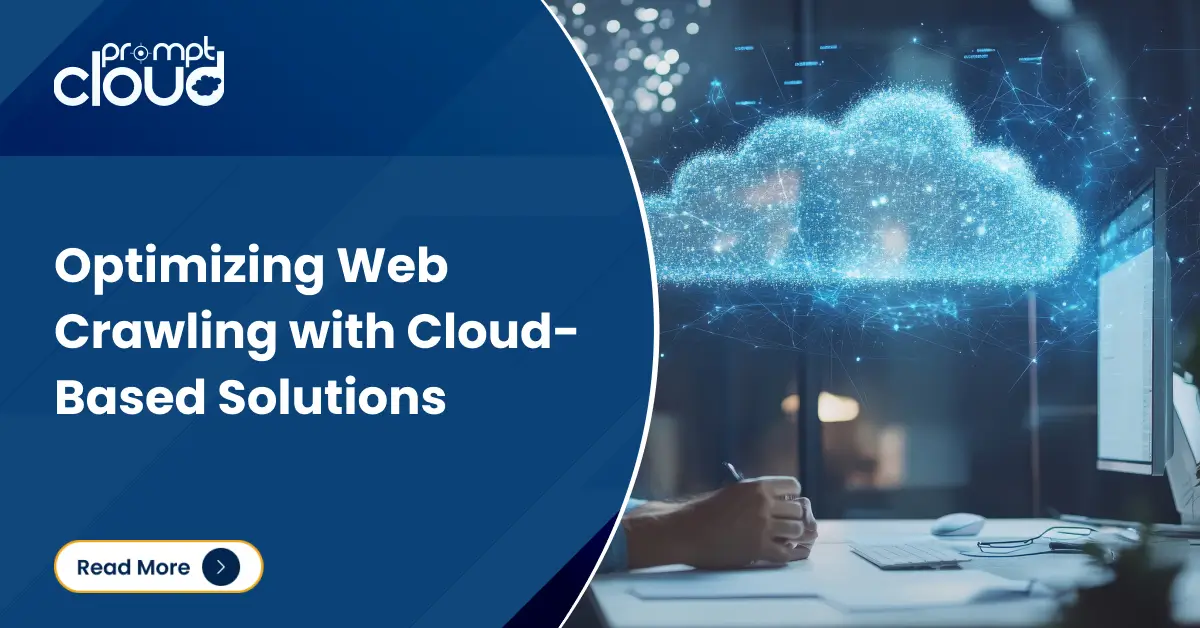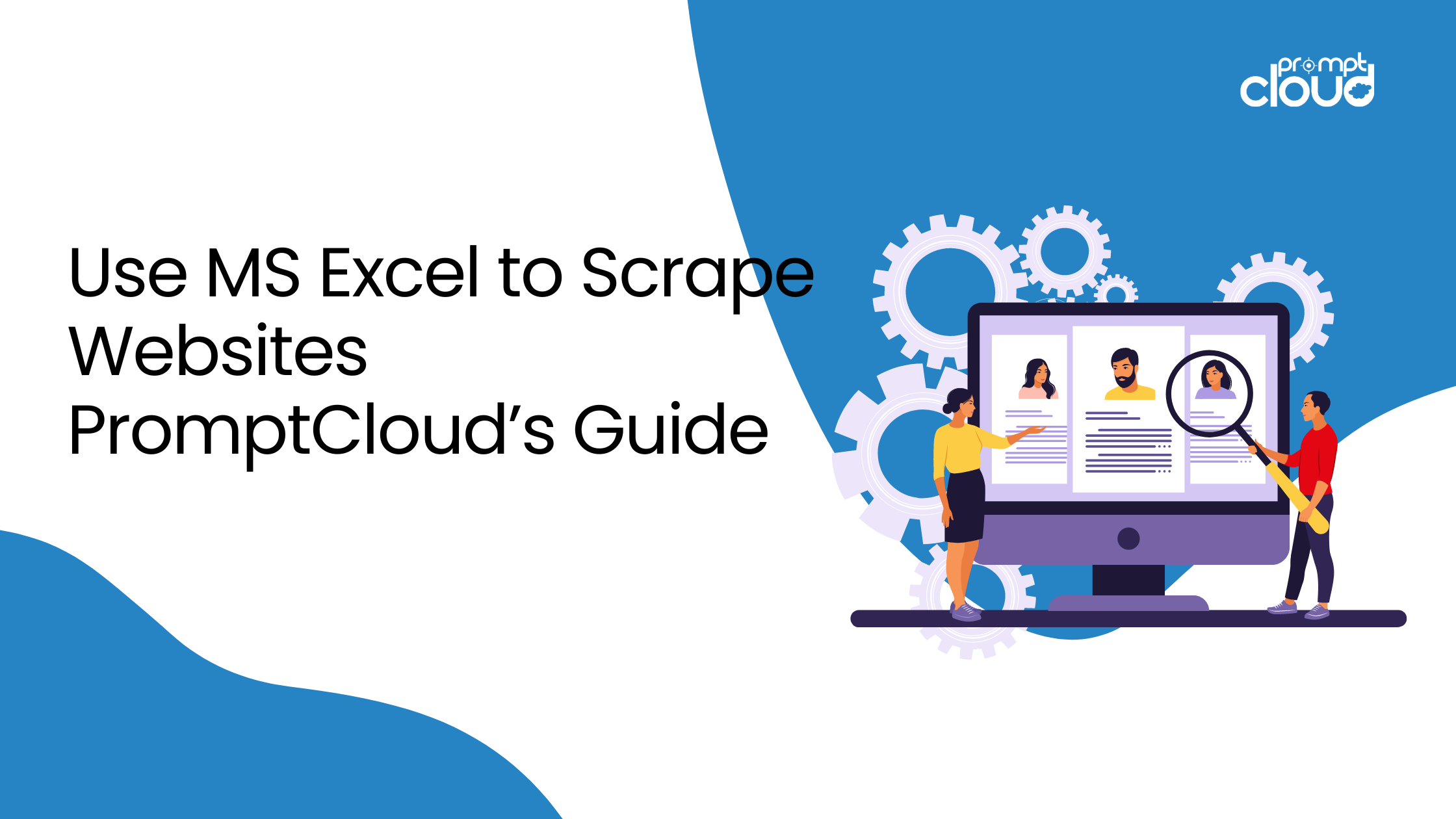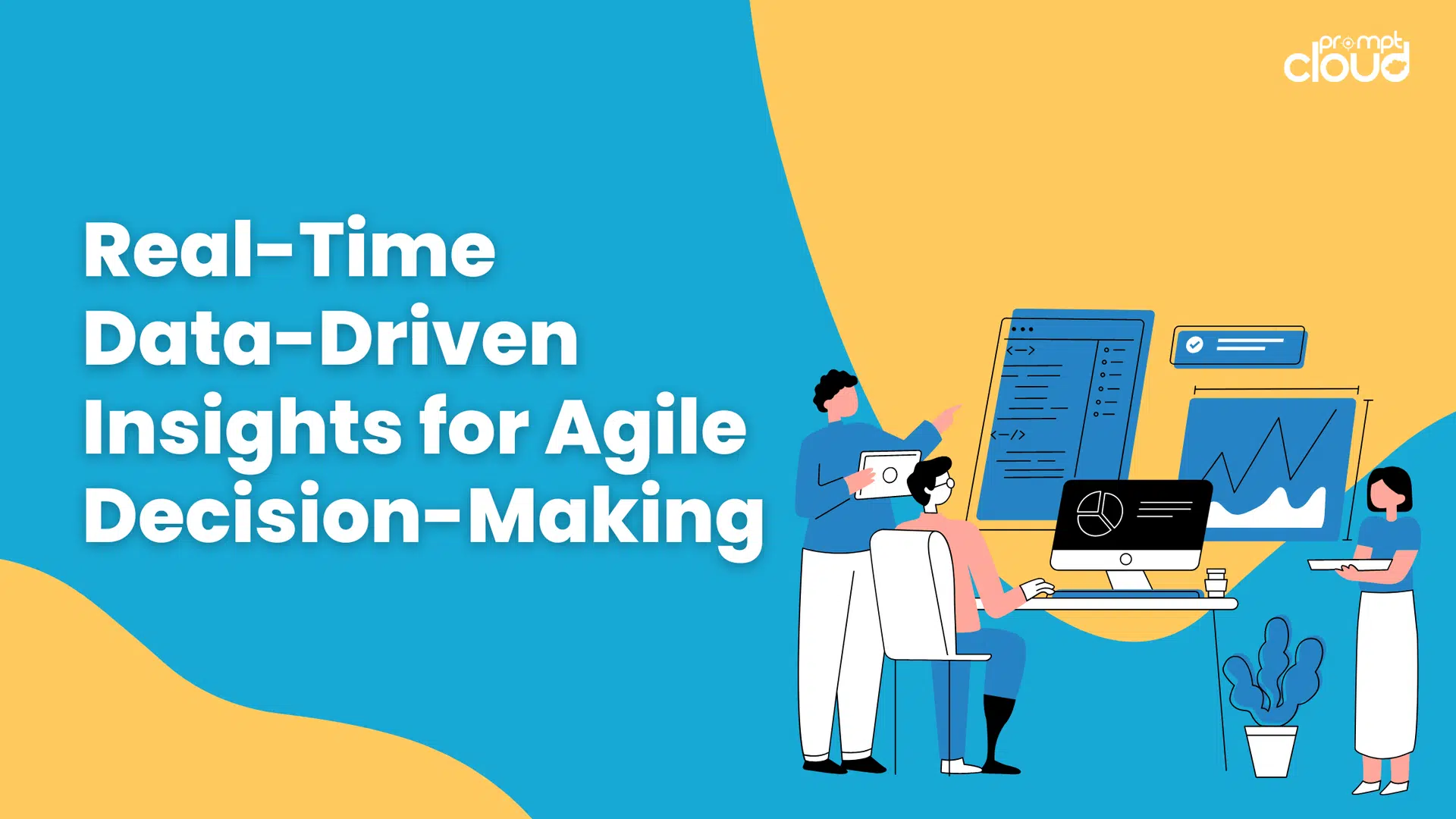
Abhisek Roy
- July 21, 2023
- Blog
Even with the increased consumer base, companies have to fight it out amongst themselves to make the most of the thin margins on most services and products. Also, behemoths of yesteryears make way for more innovative companies that use data to their advantage. Orkut was replaced by facebook the likes of Nokia and Blackberry by Apple, and Blockbuster by Netflix. Companies have started using data for business purposes like understanding customers better, coming up with new product ideas, upgrading hiring strategies, and more. The use of data in business processes enables business agility and resilience to changes –
Data-Driven Decisioning:
Businesses use data for making critical decisions today instead of backing on the gut feelings of key personnel or deciding on a direction based on a majority backing. Major meetings that will chart the course of action require a detailed presentation of existing data as well as trends, patterns, and correlations that can be extracted from the data. Often historical data for business is used for extrapolation to get a better understanding of how the business may shape up based on the recommended changes.
Understanding the Customer:
Most new businesses shut shop because they fail to understand which is their actual customer base, their spending power, and how they might react to changes like an increase in the price or the addition of new features. Data from historical as well as real-time sources can go a long way in helping you understand your users. Companies tap into different data sources like social media posts and comments as well as reviews on different websites to understand their customers. In case a company is still in the ‘pre-launch’ phase, it usually conducts surveys, hands out samples to get quick feedback, and conducts market studies on how similar products are faring.
Operational Efficiency:
Whether you are an eCommerce website that is facing issues related to warehouse management or a new matchstick seller facing distribution woes, operational efficiency can only be improved using data in the 21st century. As companies scale and move to rapid growth stages, friction in daily workflows crops up. These need to be solved by analyzing the data and figuring out optimum solutions instead of throwing money at problems. For instance, suppose a company is facing warehouse problems and just decides to take an easy way out by opening warehouses in every new town it sells in– it would not be scalable and there’s bound to be a cash crunch once VC money is spent.
New Product/Feature Development:
No company wants to place all its bets on a single product today given that new competition can lead to loss in customer numbers. Customer loyalty to a single product may be too risky given that even billion-dollar companies have fallen with change in customer preferences. However, to diversify or to bring in new features to keep customers engaged, companies need data, so that efforts are not wasted or diverted from core products.
Risk Management:
When Covid hit, tons of companies both large and small went under water. Those that did not have contingencies in place sank faster. Some took advantage of the pandemic and the “work-from-home” policies to grow quickly. Even these companies were affected once the vaccine was administered to most and things started going back to normal. In both cases, companies that did not calculate the risk related to changes had to wind down operations. Data from historical events help companies keep contingency plans like BCP in place. Even when faced with unprecedented situations, companies can extrapolate data for business to get some understanding of how things would pan out over months or years based on changes in the market.
Companies that Used Data to Grow
In case you are unsure whether data would give you a considerable advantage or are comfortable focusing only on your product or service development here are some companies that used data to reach the heights –
Netflix:
When it comes to processing data at a massive scale and designing recommender systems, Netflix comes up at the top. Its recommender system is a prime example of data-driven decision-making. It sits on top of user data, runs in real-time, and provides suggestions based on which shows and movies customers have watched in the past.
Zillow:
A popular real estate marketplace, Zillow uses web scraping to get data points on property listings, market trends, and the latest news in real estate. This is how it can provide its users with comprehensive information for their search results. All this data has helped Zillow in becoming a single point of contact for all things real-estate and boosted its growth.
PriceGrabber, Kayak, Shopzilla, and more:
Price Comparison websites like these have grown to prominence in recent years by scraping data from the web and showing customers how the price of a product has changed over the last few months. They also show its lowest and highest price in recent times along with recommendations of – “buy-now” or “wait for prices to fall”. Thanks to these websites, buyers can use data to make more informed purchase decisions.
Uber:
The largest ride-hailing company in the world analyzes data such as traffic patterns, user behavior, previous trip data, and news of major accidents or road closures, to improve user experience. The data helps in reducing wait times, provides more efficient routes to drivers, and improves overall customer experience.
Spotify:
Spotify is a data-driven music app that stands out among the crowd by using data to create personalized recommendations. It learns listening habits and preferences along with latest trends in the music industry to create filtering techniques that enhance the overall music streaming experience. Given that any music application can be used for listening to songs, this data-driven approach sets the company apart.
The Source of Data
Our team at PromptCloud provides a DaaS solution that comes with a plug-and-play approach. It has just 3 simple steps –
- Provide us with a list of websites and the data points that need to be scraped along with the frequency of scraping.
- Check out a demo solution built by us and finalize contracts of integration with your existing system.
- Go live with a real-time, fully managed, on-the-cloud, web scraping solution.
Our web scraping solution provides clean and accurate data that is used for a variety of applications such as market research, competitor analysis, sentiment analysis, price intelligence, data enrichment, and more. Given that our DaaS solution is pay-per-use, it can scale based on your needs and your monthly billing will be based on the number of webpages you scraped and the amount of data you consumed.
Delivering high-quality data is the main focus and for that, we employ the latest tech in data mining, web scraping, and artificial intelligence. This ensures that complex data formatting is handled and clients can always trust the data they build their businesses on.
Sharing is caring!





